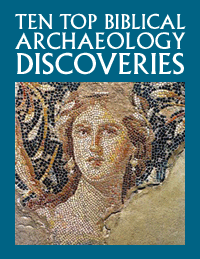
Bronze statue of the Egyptian goddess Isis with the god Horus seated on her lap. By Anonymous (Egypt)—Walters Art Museum. Public Domain.
Archaeologists cannot seem to separate their interpretations of female iconography from ideas about fertility. Every goddess of every ancient pantheon is understood to be a “mother” goddess (even the virgins!), and all depictions of females are “fertility” goddesses, “fertility” amulets, and, quite simply, images of fertility.
Clearly, we have a problem in how we understand women.
Now, to be clear, ancient artists did, in fact, create their fair share of maternal images. The ancient Egyptians and Cypriots especially had a whole range of kourotrophic iconography—images of woman with child—throughout their incredibly long (pre-)histories, from the fourth millennium into the Common Era. These women appeared cuddling a child, breast-feeding a child, and bouncing a child on the knee. Egyptian images of Isis with Horus evolved into the Madonna with Child, even as the Cypriot kourotrophs eventually gave way to the far less maternal Goddess with Upraised Arms.

Likewise, the Phoenicians created the so-called dea gravida, depictions of clothed, veiled, pregnant women. These might be understood as “maternal,” especially as similarly coiffed, contemporary female images also appear as kourotrophs. Back in Cyprus, Archaic Age (750–475 B.C.E.) stone and clay figurines appear in sanctuaries showing women in the process of giving birth. If the ancients wanted to convey the concept of motherhood, they could do so in utterly unambiguous fashion.

Plaque with Nude Female figure from the Canaanite site of Gezer. Drawing by Paul Butler, courtesy of the author.
The problem is that we interpret all female figurines as fertility objects, especially when those females are naked. This is especially the case with a specific image known as the Nude Female, an en face, naked female with legs together. Beyond these three defining characteristics, she exists in a multiplicity of forms, ranging from mortal to divine (sometimes she has wings, or stands on a lion); with arms hanging straight down the sides (especially in Egypt), hands clasped above the abdomen (most common), clutching the breasts (often confused with the preceding category), gesturing to her sexual attributes, or holding objects such as snakes, flowers, a disc, or even a child. She is found in homes, graves, garbage heaps, and the occasional shrine. She appears from Italy to India, from the Bronze Age through the Hellenistic period. The likelihood that she always means the same thing to all people from all places and times is, frankly, quite low.
Yet, the default interpretation is to see these all as fertility items. “Fertility” isn’t even defined. Are we talking about maternity—human fertility? If so, we have to admit that these creatures seriously lack their kourotrophic—not to mention parturient!—sisters’ maternal imagery. Earthly fertility? It is hard to see how a schematic Nude Female adorning a funerary jar from third-millennium Mesopotamia pertains to agricultural bounty. Animals? How a Nude Female grasping a pair of lions by the ears on a tenth-century cult stand from Taanach in Israel promotes their fertility is left to pure speculation.

Lower register of the Taanach cult stand from Israel, which depicts a Nude Female figure flanked by a pair of lions. Drawing by Paul Butler, courtesy of the author.
Basically, we are reducing a full half of the human population to a single archetype. The female body is something that gives birth and inspires others to do the same, and all references to it—especially if it is naked—must pertain to that. And since we don’t have a very good way of presenting a female in the absence of her body, womanhood is reduced to motherhood.
This is problematic for several reasons. First, the peoples of the ancient Near East understood that it was males who were fertile, not women. After all, they could see semen; the egg could merely be hypothesized by the likes of Aristotle. Second, we blind ourselves to the range of possible meanings of female imagery throughout the ancient world. Perhaps those jar handles from Mesopotamia pertain to notions of ethnic identity. Perhaps those kourotrophoi in Cyprus are evidence of ancestor cult. In all cases, we deliberately misunderstand those peoples we are trying so hard to study. Finally, we blind ourselves to ourselves. Assumptions about the past reflect assumptions about the present. If we can only conceive of females and their bodies as objects of fertility, how do we understand modern women? Deep down, are all women just mommy figures?
About the Author
Stephanie Lynn Budin is an ancient historian who focuses on gender, religion, sexuality, and iconography in ancient Greece and the Near East. Her published works include Freewomen, Patriarchal Authority, and the Accusation of Prostitution (Routledge 2021), Women in Antiquity: Real Women Across the Ancient World (Routledge 2016), and Images of Woman and Child from the Bronze Age (Cambridge Univ. Press, 2011), as well as numerous articles on ancient religion, gender, and iconography.
Read more in Bible History Daily:
All-Access members, read the collection Feeding the Biblical World, in the BAS Library
Not a BAS Library or All-Access Member yet? Join today.The post Mothers, Goddesses, and Fertility appeared first on Biblical Archaeology Society.

0 Commentaires